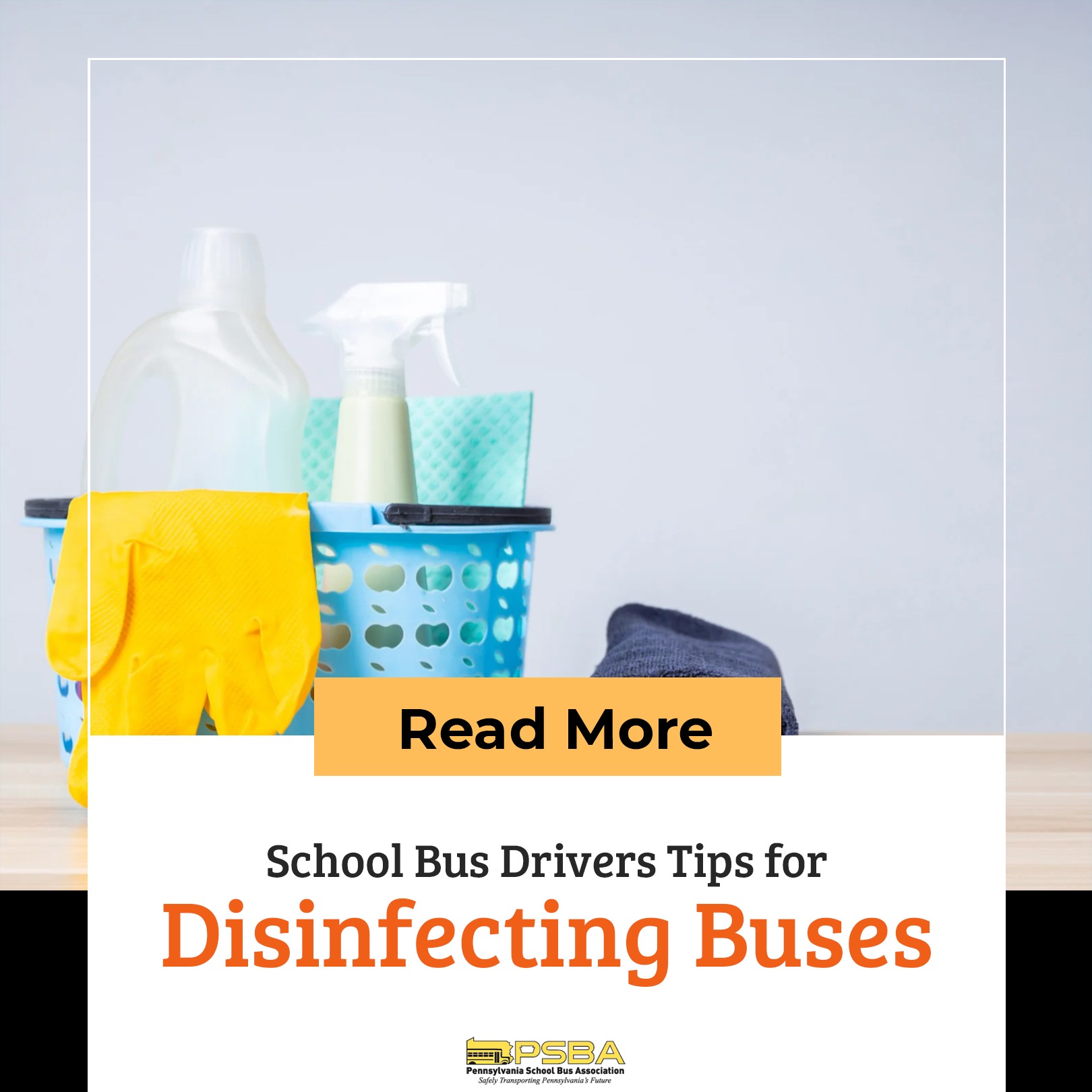As a school bus driver, your priority is always the safety of the students. With the Covid-19 pandemic still lingering, that safety has now extended to keeping the school bus clean, sanitized, and disinfected to prevent the virus and other microbes from spreading.
Unlike other viruses, the Covid-19 virus can spread at a fast rate. Children generally have a weak immune system compared to adults. Thus, kids are more susceptible to the virus, which can severely impact their health.
This is why it is still essential to clean, sanitize, and disinfect the school bus to maintain safety. Cleaning up those messes left inside the school bus is familiar to drivers. However, the Covid-19 pandemic has compelled them to take on an unprecedented duty of disinfecting and sanitizing the school bus within short intervals to keep everything safe for everyone aboard.
The differences between cleaning, sanitizing, and disinfecting
Cleaning: It may help remove germs from the surface, but there’s a high chance for the germs to return and accumulate again. Cleaning away germs usually involves the use of soapy water.
Sanitizing: It helps in removing the virus and preventing the risk of spreading it again on the surface.
Disinfecting: Of all three, disinfecting is the best way as it kills germs, bacteria, and viruses and prevents them from spreading.
Children might have contact with these microbes in school buses, and most aren’t aware of them. That’s why school buses must be disinfected regularly before pick-up and drop-off. Anyone can use a spray bottle to spray disinfectant in all directions.
How to clean, sanitize, and disinfect the school bus
Here are some ways school bus drivers should follow to ensure that the bus is cleaned, sanitized, and disinfected.
1) Cleaning
First, find out the high-contamination areas. These are areas on the bus where kids are most likely to hold on to, such as stability bars, handlebars on the back of the seat, window ledges, seat belts, headrests, armrests, luggage racks, and door handles.
Cleaning in these areas is a priority. One can use a handheld vacuum cleaner to clean the seats and floor of the bus. A vacuum, preferably with a HEPA filter, effectively sucks in dust particles and allergens.
The use of soapy water for cleaning the floors can also be an option, but ensure there’s no water logging in the corners and grooves of the floor.
There are areas where the water may dry out later and remain on the floor, making it slippery and a hazard for the kids riding the bus. So, use a vacuum to clean those areas instead of soapy water.
If the bus has an air conditioner or heater vents, carefully clean them by wiping them with a damp cloth before spraying them with a disinfectant.
2) Sanitizing
Sanitize the seats by dry-cleaning them or using sodium hypochlorite on them. It will reduce germs, viruses, and other microbes by 99.99%.
3) Disinfecting
After the basic cleaning and sanitizing are done, the last step is disinfecting the bus. It’s necessary to use disinfectants that have alcohol as a base, which is effective. While disinfecting the school bus, you should prioritize the areas where kids usually touch, such as seats, stabilizing bars, headrests, and handlebars on the back of the seat.
The spread of Covid-19 has now been contained, and the world is slowly returning to normalcy. However, it remains a threat, especially to children’s health. That’s why it is still crucial to clean, sanitize, and disinfect school buses to prevent the virus from spreading and to ensure the children’s health and safety.
If you’re living in Pennsylvania and considering driving a school bus as the next career option, https://schoolbushero.com/jobs has excellent job offerings for those who want to apply as school bus drivers and bus attendants.

